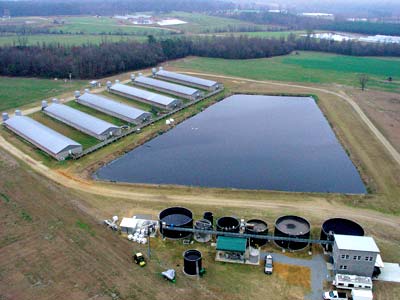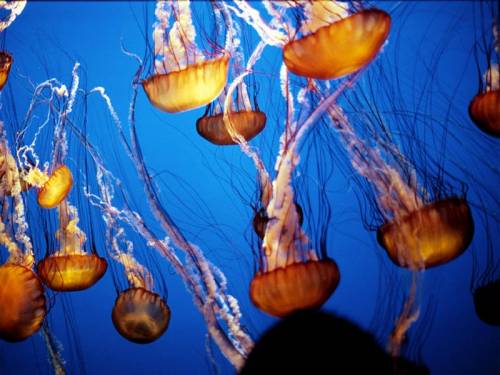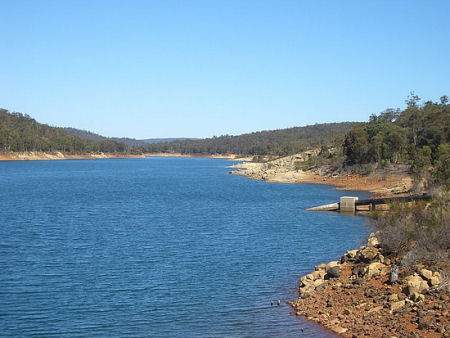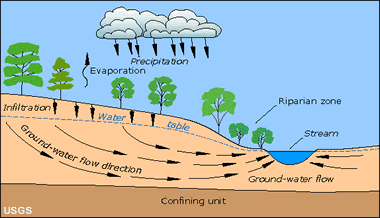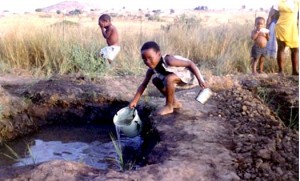- Around 10% of the total energy supply comes from biomass, and most of that (80%) comes from the ‘traditional’ biomass sources of wood, dung and crop residues.
- Globally, irrigation water allocated to biofuel production is estimated at 44 km3, or 2% of all irrigation water. Under current production conditions it takes an average of roughly 2,500 litres of water (about 820 litres of it irrigation water) to produce 1 litre of liquid biofuel (the same amount needed on average to produce food for one person for one day). Read more
Welcome!
THE SITE POSTS POPULAR ARTICLES, ESSAYS AND OTHER USEFUL INFORMATION ABOUT WATER AS A UNIQUE NATURAL RESOURCE.


Did you know…? Facts and figures about bioenergy and agricultural water use
Life in Water
Life is thought to have originated in an aquatic environment—the oceans. Living organisms have since adapted to numerous aquatic habitats , both Sea nettles and jellyfish are pelagic and planktonic, meaning that they live in the water column and primarily float or drift as opposed to swimming. marine and fresh-water. They occupy environments as diverse as lakes, rivers, and oceans.
Marine Environment
About 17 percent of known biological species live in oceans. Marine species are described as either pelagic or benthic. Pelagic organisms live in the water column itself. Benthic species live on the ocean bottom. Read more
Australian Water Shortages Trigger Recycling
On Australia’s western coast, the city of Perth is in critical danger of depleting the water reserves held by its dams. In response, the government is pumping treated wastewater into the Gnangara Mound Aquifer. Wastewater is being recycled in hopes that it will alleviate the stress placed on Perth’s water supply; the highly treated water could reach homes within 18 months.
Western Australia has been experiencing drought conditions since 1970, with winter rain levels decreasing as much as 20% since that decade according to WA Today after a study on the drought was released. The reservoirs that typically provide Perth’s drinking water are currently around 20% full so the government is looking into alternatives. Since a study by the University of Western Australia’s Centre for Water Research predicts that supplies will run out by the 2012 summer if nothing is done, finding an alternative water supply is urgent. Read more
New Discovery about How Water Moves Through Soil
Behavior of Water in Soil Surprises Researchers
Researchers have discovered that some of the most fundamental assumptions about how water moves through soil in a seasonally dry climate such as the Pacific Northwest are incorrect – and that a century of research based on those assumptions will have to be reconsidered.
A new study by scientists from Oregon State University and the Environmental Protection Agency showed – much to the surprise of the researchers – that soil clings tenaciously to the first precipitation after a dry summer, and holds it so tightly that it almost never mixes with other water. Read more
The Poisoning of America’s Water Supplies
Every day in the United States more than 240 million people turn on their faucets in order to drink, bathe, and cook, using water from public water systems. But more people are arriving to the point where they will not let a drop of water touch their lips in their own homes unless that water comes from a bottle shipped from a fresh water source.
And even then we still have trouble in the home. Researchers at the University of Texas found that showers and dishwashers liberate trace amounts of chemicals from municipal water supplies into the air [i].
“The frog does not drink up the pond in which he lives.” – American Indian Proverb
Squirting hot water through a nozzle, to produce a fine spray, increases the surface area of water in contact with the air, liberating dissolved substances in a process known as “stripping.” So if we want to avoid those chemicals drinking bottled water is not enough. Chemically sensitive individuals would also have to wear a gas mask in the shower, and when unloading the dishwasher if they want to avoid chemical contamination. And even then the skin will absorb directly in the shower chemicals like fluoride so we cannot assume we are safe from the contaminants even if we are drinking pure water. The majority of people still take the purity of their tap water for granted when they shouldn’t. Read more






